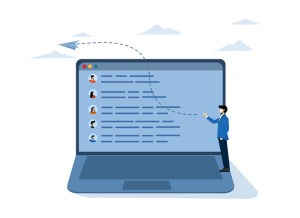Enable Your Sales Team with a Video Hub in Salesforce



When it comes to delivering worthwhile content, it’s important to ‘be where your audience is’ and give them something highly useful. In other words, if your audience is mobile–as we’re seeing–you too must be mobile. If they expect or prefer certain formats, you should use these formats, and so

Salesforce Canada
When it comes to delivering worthwhile content, it’s important to ‘be where your audience is’ and give them something highly useful. In other words, if your audience is mobile–as we’re seeing–you too must be mobile. If they expect or prefer certain formats, you should use these formats, and so on.
That said, considering the items you need to communicate with your sales team (and where they hang out on a daily basis), it makes a lot of sense to use Salesforce as a sort of “home base” for useful information. It’s through Salesforce that you can provide resources and tools to help your reps close deals faster and collaborate together. You’ll also want to provide all resources in a content format your sales reps will enjoy and appreciate.
In fact, Salesforce can actually be used as a sales enablement and training tool. As we have found at our company, you can teach your team and scale a consistent training message by using videos (or a video hub) embedded directly in a Salesforce Visualforce page.
Here’s one of the training hubs our team uses:
On a Visualforce page like this you can embed single videos, multiple playlists, or a hub full of categorized content, similar to the support hub featured in the image above. You can even add text documents to the Visualforce page should you need to include other types of media (i.e. quote templates, pricing sheets, one pagers, etc.) to close deals more efficiently.
So Why Do You Want an Internal Video Hub in Salesforce?
A resource hub like this is valuable for several reasons. We’ve found it’s especially good for sales enablement and for providing training material in a convenient, trackable way.
1. Easy Access to Content
For sales enablement, a video hub set up by a team manager could include product walkthroughs, demos, case studies, customer testimonials, and recorded webinar content, for example. The hub is basically a way to grant access to final-version videos that sales reps can send out to prospects to speed up the buying process.
2. Actionable Data at Your Fingertips
Because all of the videos are located in one convenient spot, they’re not only easy for your sales team to find and share, but once your reps do share them, they can track exactly which prospects are engaging with the content, their video viewing history, and overall attention span per video asset. This engagement data is then fed directly into Salesforce on the Lead or Contact profile, so reps can see which leads are actually watching, and where their personalized interests lie.
Here’s how viewing history looks in a user’s profile:
In this specific user’s case, you’re able to see that they watched a video on lead scoring four times, and their attention span data indicates they were specifically interested in top of funnel or introductory videos. With this engagement data breakdown, you have the context you need to strike up a meaningful conversation with this lead.
3. Internal Training
Beyond the benefits of keeping a hub of helpful videos at your sales teams’ fingertips, you can also use a video hub within Salesforce for internal sales training.
In this case a manager could upload training videos that sales reps must watch on topics like negotiation, prospecting, and social selling techniques, for example. Watching all of the videos in one training hub, the team gets access to the information they need to perform to their best standard, and their manager can actually account for completion rates of the video content and confirm who has officially finished the training.
Here’s what an internal user’s video viewing history looks like in their profile…
 You can also use the hub for training insofar as it relates to internal processes sales reps must learn in order to function in their role. When first learning how to work through a sales cycle, or how to build a quote, every company is different and you’ll want your reps following the processes you use internally. You can easily record a short video on your iPhone or webcam explaining the process, and then embed the recording on a video hub Visualforce page within Salesforce. These types of training videos scale your message as your team grows and make onboarding a breeze.
You can also use the hub for training insofar as it relates to internal processes sales reps must learn in order to function in their role. When first learning how to work through a sales cycle, or how to build a quote, every company is different and you’ll want your reps following the processes you use internally. You can easily record a short video on your iPhone or webcam explaining the process, and then embed the recording on a video hub Visualforce page within Salesforce. These types of training videos scale your message as your team grows and make onboarding a breeze.
Overall, video is a great asset within Salesforce because of the engagement factor. Your sales reps want to interact with content that’s quick to consume and learn from (it all goes back to using the content people crave), and video also happens to be the content you can track. The ability to monitor completion rates on training videos (or even sales enablement videos sent to prospects) is incredibly valuable and can change how you use both video and your Salesforce instance.
About the Author
 Michael Litt is the CEO and co-founder of Vidyard, a video marketing platform helping marketers measure the impact of their video content. Thought leader, surfer, and serial entrepreneur, Michael is passionate about content marketing and changing the way we engage and purchase with video. Chat with Michael on Twitter or LinkedIn to learn more.
Michael Litt is the CEO and co-founder of Vidyard, a video marketing platform helping marketers measure the impact of their video content. Thought leader, surfer, and serial entrepreneur, Michael is passionate about content marketing and changing the way we engage and purchase with video. Chat with Michael on Twitter or LinkedIn to learn more.
Want more tools and tips for building a successful sales team? Download our free e-book, 5 Steps to Better Sales Performance, by clicking the button below.























